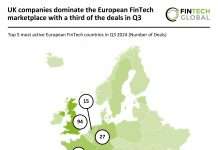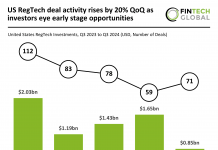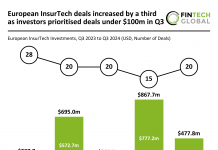Data and analytics software company Quantexa has published a white paper on how to monetize data through decision intelligence (DI) aimed at insurance executives.
In this whitepaper, Quantexa highlights that decision intelligence (DI) is the ‘new business intelligence’, claiming that DI goes one step further by not just providing the information for your staff to make better decisions, but also helping companies turn that into a fully operational and automated decision in real-time.
The company added that, if the DI determines a human eye is required it is always able to refer to a human, however, the DI will still provide all the gathered insight and highlight the key inputs and areas for validation within the decision.
Quantexa noted that while this sounds similar to AI, AI technology has historically failed to achieve consistent levels of automation in most cases. For example, some AI-supported analytical models may be used to identify fraudulent claims with some levels of success, but Quantexa claims many models have often either missed the “smart fraudsters” or generated too many false positives for investigators to work through.
Quantexa then goes on to remark that even deep-learning techniques (although powerful) often lack ‘context’ and that this is the secret to changing the game. They state that context creates accuracy required to truly monetize data and deploy true DI into production.
To put this into perspective, Quantexa cited the process of buying a house. A human when purchasing will consider lots of data. Internal data such as room size, condition or fixtures; and external data, e.g. crime statistics, public transport, local schools and property value.
Humans will make decisions based on the context available to them and so should companies. Quantexa quote that to do this effectively you need to produce an entity view – for insurance that may be a customer, supplier, claimant, address or employee. Then you have to create a network view – bring the data and entities together to understand the links and interactions. This could be achieved through, for example, application or claim transactions, shareholders, common directors or shared addresses / contact details or other correlated behaviours.
Quantexa said, “When combined with AI models, context is the essential ingredient that enables true decision intelligence.
It does not have to be limited to customer data, suppliers, employees, IT infrastructure, directors, etc., as all interact with each other in graphs, as long as you can resolve the underlying entities across many internal and external data sets. Quantexa provides the platform that enables context-driven decision intelligence.”
Key DI building blocks
The company then used the white paper to highlight the key building blocks of a context-driven DI platform for an instance focused on customer decisions – what the firm refers to as a Dynamic Customer Context (DCC).
These blocks include the real-time ingest of internal and external data, dynamic entity resolution and network generation, interaction with master data management, searching and resolving the existence of a customer, continuous updates and real-time alert generation or scoring.
Quantexa also noted that while many senior management teams believe that there is significant value to becoming a data-driven organisation through decision intelligence, they are not always clear on how to make this happen.
The company stated that securing quick wins – choosing compelling opportunities with a proven track record where analytics will provide benefit was included as a route to success. Vision, design, team and having a transformation plan were other themes organisations require to be successful and exploiting data to further monetise its value.
Click here to view the full whitepaper.
Copyright © 2021 FinTech Global











